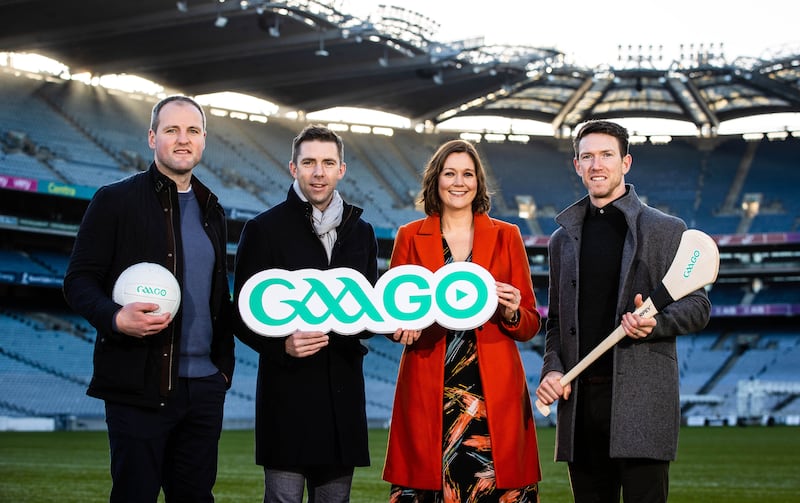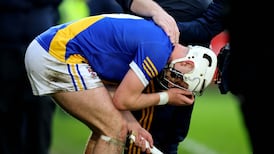It can feel like a situationist prank when the release of a major communications policy pops up on a Friday at lunchtime – a time of the week which, although not quite “death of the queen mother” territory, is busy and predetermined.
Sport being sport, the weekend is full of main events and coverage is geared to be event-driven. Obviously if something Earth shattering occurs, previews and interviews may have to be moved around but, if you want publicity for anything, Friday afternoon is not a great starting point.
That may not have been the purpose of the GAA publishing their communications strategy for the next three years last week. It may have just been intended as a matter of record, but the irony was there.
Marketing advice that the GAA took to heart concerning matches and events counselled against “a blizzard of brands” and too many sponsors and endorsements in the one place at matches or events.
READ MORE
Reading the Communications Plan 2023-26, you are struck by how difficult those strategies have become with the diversification of the audiences the GAA wants to reach and the multiplication or blizzard of media platforms that need to be serviced or harnessed.
At the weekend there was also the synchronicity of a social media tumult over the cracking Munster championship fixture between Clare and Limerick not being available on terrestrial television. It was ironic to see the availability of matches on the once excoriated Sky Sports being held up as some kind of golden age of accessibility.
Sky’s output has been largely taken over by GAAGO, the streaming service run by the GAA and RTÉ. When that switch was announced last year, there was a sense that it may have come a bit early for GAAGO, but the pandemic had convinced the GAA that the future of streaming had arrived given the number of club matches webcast in 2020 and 2021.
Certainly it required a fair bit of shifting to get personnel and outside broadcast facilities up and running for the volume of fixtures undertaken. But to be fair, this season has so far gone well if not without glitches and the personnel involved between commentators, analysts and presenters have done a good job.
There is the problem of accessibility, though. A streaming service requires decent broadband and that is not a nationwide amenity. Complaints have surfaced about that deficiency and even the GAA have accepted there is a problem.
“Streaming can be volatile,” Noel Quinn, the GAA’s head of broadcasting and marketing, said last week. “There will always be issues. We are all learning and we are aware that some people can be frustrated by access points and that is something we are working on.”
It is reminiscent of similar problems that beset the reception of RTÉ2 in some areas of the country, especially in the North, in previous years.
Neither does it help that older people are seen as being primarily affected because of less familiarity with and access to the digital world. Age Action recently estimated that “about two-thirds of people over the age of 65 either don’t use the internet, or have below basic skills”.
This comes after protests over the cashless turnstiles policy which disproportionately impacts the same demographic. Both issues have created unease about what is seen as a blase disregard for a more vulnerable audience.
[ Football championship draw heralds uncharted territory for GAAOpens in new window ]
The parallel charge that the GAA has no business “putting matches behind a paywall” is less persuasive. The association must walk the line between generating revenue and promotion by making a reasonable number of broadcasts free-to-air.
The GAA is in the business of running a sports organisation – not providing free television entertainment.

You could say a re-run of the last year’s best match in the championship was a risky choice for streaming but Clare and Limerick were unbeaten then, whereas this time around Clare lost their first match. Put it this way: were there many complaints before it turned out to a belter that it was not on RTÉ and would constitute a lost marketing opportunity?
The lack of the Saturday Game, the new highlights programme hosted by Damien Lawlor that was launched with a bit of fanfare at the end of April, but which has disappeared again for a few weeks, exacerbated the problem.
The streaming initiative is very much in keeping with the communications plan, which is hoping to keep track of a rapidly changing media landscape.
The conclusions drawn are ambitious.
“Sports organisations are taking advantage of new technological platforms to go direct to supporters and bypass the ‘middle man,’ eg traditional media,” the report says.
“This allows sports organisations to go direct to supporters and send content to an audience that wants it. It can also ensure consistency and control of the message.”
[ GAA fixtures, TV details and team news ahead of the weekendOpens in new window ]
To an extent that is happening with live coverage. The GAA are involved in outputting it on GAAGO, which has now streamed 11 live championship fixtures in the opening four weeks.
However, the report does suggest caution: “Balancing creating its own content while maintaining editorial integrity and credibility will be a balancing act for the GAA.”
This concern is substantiated elsewhere: “While it has seldom been easier to communicate given the tools at our disposal, being heard by the right people is a totally different proposition.”
In other words, whatever your narratives, you need people to believe them.


















